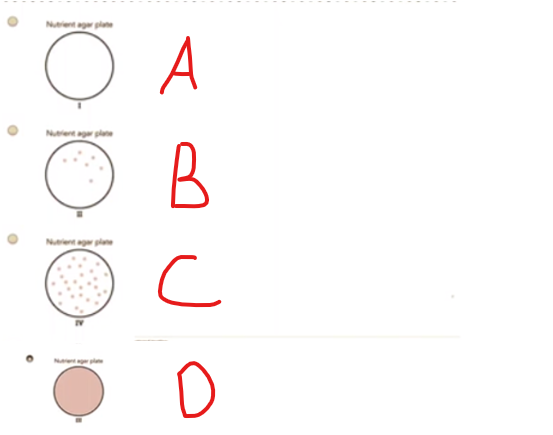Which of the following describes one difference between skeletal muscles and cardiac muscles?
A. Skeletal muscles are found in the viscera whereas cardiac muscles are found in the cranium
B. Cardiac muscles contain intercalated discs, whereas skeletal muscles do not
C. Cardiac muscles are voluntary, whereas skeletal muscles are involuntary
D. Skeletal muscles are autorhythmic, whereas cardiac muscles are not
For those aiming to excel in their ATI TEAS test and secure admission into their desired nursing program, ExamGates offers an invaluable resource. Our platform features practice questions meticulously crafted by tutors who have previously aced the exam themselves. With ExamGates, you can access content that is 100% relevant to the test, accompanied by vivid images and illustrations. Additionally, our platform provides comprehensive explanations for both correct and incorrect answers, empowering you to fully grasp the material and optimize your study efforts. Take the first step towards your nursing aspirations with ExamGates today.
Cardiac muscles have intercalated discs that enable them to contract in a coordinated manner. Skeletal muscles do not have intercalated discs, as their contraction is under voluntary control and does not require the same level of synchronization seen in the involuntary contraction of cardiac muscle.
Therefore, the Correct Answer is B.
More Questions on TEAS 7 Science Exam 5
Question 1:
Which of the following is classified as a noninfectious disease?
A. Psoriasis
B. Brucellosis
C. Olkunginys
D. Dengue
The Correct Answer is A.Psoriasis is a chronic skin condition that causes red, scaly patches on the skin. It is not contagious, and it is not caused by any microorganism. It is believed to be an autoimmune disorder where the immune system attacks healthy skin cells.
Question 2:
Which of the following respiratory structures is affected by a disease that disrupts gas exchange, such as emphysema?
A. Trachea
B. Secondary branch
C. Primary bronchi
D. Alveoli
The Correct Answer is D.Question 3:
Escherichia cell is plated on nutrient agar plates that each contain a different type of antibiotic. The shaded area represents growth of the bacteria. Which of the following plates contains bacteria that were most resistant to the antibiotic

A. A
B. B
C. C
D. D
The Correct Answer is C.This is the plate with the most growth despite the presence of antibiotic cover.
Question 4:
in pea plants, green pod color (6) is dominant to yellow pod color ( A cross was done between a plant with green pods and a plant with yellow pods. Of the resulting offspring 50% had green pods and 50% had yellow pods. Which of the following were the genotypes of both parent plants?
A. Ggx Gg
B. GG x gg
C. Gg x gg
D. gg x gg
The Correct Answer is C.
|
|
G |
g |
|
g |
Gg |
gg |
|
g |
Gg |
gg |
Question 5:
A study found two processes. Process A and Process B, are to be correlated.
Which of the following is true for these processes?
A. The study indicates that Process A causes Process B
B. The study cannot indicate whether Process A and B have a negative relationship
C. The study does not indicate a causal relationship between the processes.
D. The study cannot indicate whether Process A and B have a positive relationship
The Correct Answer is C.Correlation does not imply causation. Even if two processes are found to be correlated, it does not necessarily mean that one causes the other. It could be that they are both influenced by a third factor, or the correlation could be coincidental. Therefore, the study does not indicate a causal relationship between the processes.
Question 6:
A slice of apple left on a table slowly goes brown due to an enzymatic reaction. Dipping the apple slice in lemon juice prevents it from browning Which of the following best explains this result?
A. Lemon juice has enzymes which reverse the browning reaction
B. Lemon juice has a pH which inactivates the enzymes
C. Lemon juice functions to bleach the brown material
D. Lemon juice functions to dilute the brown material
The Correct Answer is B.Browning of the apple surface is due to the action of the enzyme polyphenol oxidase. Lemon juice is acidic and lowers the pH of the apple's surface. This inactivates the enzyme polyphenol oxidase, which works best at a neutral pH. This in turn reduces the browning action on the apple.
Question 7:
Which of the following hormones regulates blood calcium levels?
A. Parathyroid hormone
B. Growth hormone
C. Norepinephrine
D. Melatonin
The Correct Answer is A.The parathyroid hormone (PTH) from the parathyroid glands is important in serum calcium regulation. It increases blood calcium levels by stimulating osteoclasts to break down bone and release calcium into the bloodstream. PTH also enhances the absorption of calcium from the intestines and the kidneys.
Question 8:
Which of the following organs removes nitrogenous waste from the body?
A. Large Intestines
B. Liver
C. Kidneys
D. Gall Bladder
The Correct Answer is C.The kidneys are the primary organs involved in the excretion of nitrogenous wastes. Nitrogenous wastes are mostly products of protein metabolism in the liver. One of the common nitrogenous waste products is urea, which is excreted through the kidneys.
Question 9:
The vermiform appendix extends from the region of the large intestine known as which of the following?
A. jejunum
B. Rectum
C. Cecum
D. Achi
The Correct Answer is C.The vermiform appendix is a small, finger-like projection that extends from the cecum, which is the first part of the large intestine.
Question 10:
in which of the following locations does fertilization of an egg cell typically occur?
A. Fallopian Tube
B. Ovary
C. Uterus
D. Cervical canal
The Correct Answer is A.Fertilization occurs in the fallopian tube and not in the ovary, uterus, or cervical canal.